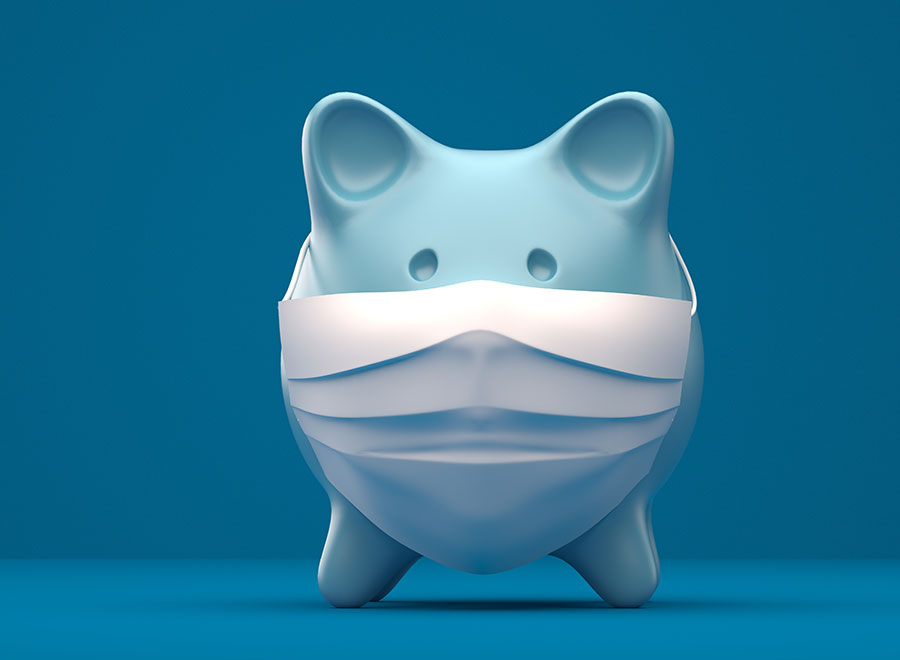How to Re-Balance Your Portfolio During the Pandemic

Gordon Pape says we will test new lows in the coming months as more people come to realize how long and difficult the recovery from the crisis is going to be. Photo: Bob Bosewell/Getty Images
Stock markets continue to flounder as investors try to figure out where we are going economically. Although we’ve seen a rally since the March lows, volatility still reigns with indexes posting big gains one day and then turning upside down the next.
What should you do in these circumstances? Some people have succumbed to fear and put all their assets in cash. Others are looking at overhauling their portfolios but aren’t sure where to start.
One reader wrote: “I have increased my cash position from roughly 15-20 per cent to about 35 per cent. Given the market losses in March and subsequent recovery, I was wondering whether this is a good time to re-balance the portfolio with increased weight on stocks (vs. fixed income) or vice versa. Or should I maintain a cautious position overall and wait for a potential re-testing of the market lows?”
Good question, but one with no easy answers. However, let’s look at some possibilities.
Although stocks have rebounded from the March lows, they are still a long way from the February all-time highs and the rally is very uneven. I believe we will test new lows in the coming months as more people come to realize how long and difficult the recovery is going to be.
It’s almost certain that the second quarter is going to be the worst we’ve seen since the Great Depression, both in terms of GDP losses and skyrocketing unemployment. As those numbers emerge, more investors are likely to lose heart and sell, sending indexes plunging.
That outlook could change if the U.S. economy opens up sooner rather than later. President Trump is pushing for that to happen. The obvious danger is a second wave of the coronavirus, which could force another shutdown. That would completely destroy any investor confidence that remains.
So, to return to our reader’s question. What should your portfolio look like right now? Here are my suggestions.
Cash. Our reader has about 35 per cent in cash. That’s a reasonable target at this point in time. Cash won’t earn you much of a return, but the risk is low and it provides ammunition to buy good companies at bargain prices if, as I expect, the markets do test new lows.
Fixed-income. Many people were shaken by the sudden, unexpected plunge in bond ETF prices in March. The underlying reason appears to have been a liquidity issue. ETFs trade on stock exchanges and can be bought or sold in a minute. The bonds that make up the underlying portfolio, and whose cumulative valuation forms the ETF’s net asset value, trade much less frequently. The result was that the high volume of sales orders for the ETFs pushed down prices to well below their net asset value.
The U.S. Federal Reserve Board quickly stepped in with a Quantitative Easing plan that went beyond Treasuries to include corporate bonds and fixed-income ETFs holding investment grade securities. The Bank of Canada has also introducing Quantitative Easing for the first time and last week extended the plan to include provincial bonds and investment-grade corporate issues. Those actions have restored a degree of stability to the credit market and to the ETFs that invest in it.
But the March shock has raised questions about whether using ETFs to hold fixed-income securities is safe. Preferably, it’s better to buy high-quality individual bonds directly, but the bond market is extremely opaque and only experienced traders should go that route.
The rest of us will have to rely on mutual funds or ETFs for our fixed-income allocation. To reduce the risk, zero in on ETFs that invest in government-issued debt. The iShares Canadian Government Bond Index ETF (TSX: XGB) is a good choice. It’s up 5.95 per cent year to date. For a U.S. position, look at the iShares U.S. Treasury Bonds ETF (NYSE: GOVT), which invests in a portfolio of U.S. Treasuries with maturities of between one and 30 years (the effective duration is 6.91 years). It is ahead 8.79 per cent year to date.
I suggest a fixed-income position of 20-25 per cent.
Equities. This is a time to be very selective in your stock choices. Do not buy the broad indexes. We are seeing the classic example of a stock pickers’ market. Some companies continue to perform relatively well, while others have fallen off a cliff. If you buy the indexes, those losers will drag you down.
Your goal at this point should be to focus on quality stocks that are holding up well, pay a sustainable dividend, and will be around long after COVID-19 is defeated. My suggested equity allocation is 30-40 per cent.
Gold. The price of gold has eased recently after passing US$1,700. I believe it will go higher as Quantitative Easing (which simply means printing money) erodes the value of the U.S. dollar. Some, but not all, gold stocks have soared (Franco-Nevada was up almost 30 per cent for the year as of the time of writing). The widely traded SPDR Gold Shares were ahead 13.3 per cent. I suggest a weighting of 5-10 per cent in gold stocks or ETFs.
That’s how I would re-balance a portfolio at this point in time. But the situation is highly fluid so stay on top of events and be prepared to act quickly.

Gordon Pape is Editor and Publisher of the Internet Wealth Builder and Income Investor newsletters. For more information and details on how to subscribe, go to www.buildingwealth.ca/subscribe
RELATED:
Where to Invest As We Head Closer to Negative Interest Rates
How the COVID Crisis and Economic Recession Could Kill Condo Life